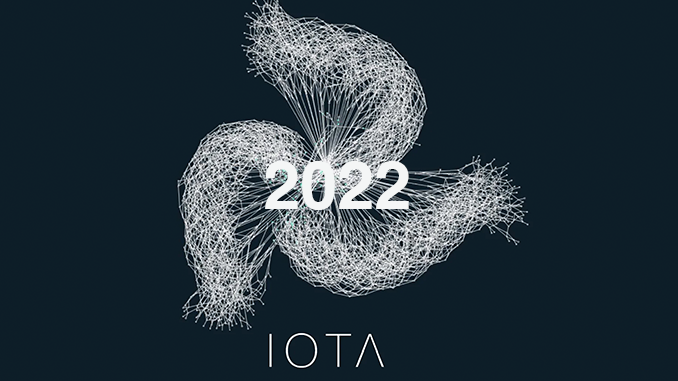
For IOTA, the crypto year 2022 was sobering. Technological development stalled, the price curve plummeted. But the side project Shimmer (SMR) raises hopes. Can 2023 bring a turnaround?
At the beginning of crypto year 2022, all seemed well with IOTA. The newly introduced staking for the Shimmer (SMR) and Assembly (ASMB) side projects created a sense of optimism, and with a price level of around $1.40, IOTA got off to a good start on January 1, 2022. But twelve months later, IOTA has crashed to around US$0.17. Nearly 90 percent down for IOTA’s price curve over the last twelve months is something even die-hard fans can’t explain away.
Of course, the massive drops in IOTA’s price must also be factored in to general market movements. When the crash of the ecosystem around Terra (LUNA) shook the crypto industry in May, IOTA was no more unaffected than FTX’s bankruptcy in November. But cryptocurrency leader Bitcoin (BTC) came through the 2022 turmoil down 66 percent, and Ethereum (ETH) also fared much better than IOTA, down 70 percent. What is behind the crisis at IOTA and will the turnaround – supported by the side project Shimmer (SMR) – perhaps still succeed?
Perennial topic: IOTA and the intended decentralization
In the crypto scene, the word “soon” is often used to refer to IOTA. The core topic of decentralization demonstrates why this is the case. In 2021, IOTA managed to raise its network to version 1.5 by upgrading Chrysalis. The next big step was then on the agenda for 2022, with “Coordicide” the shutdown of the central coordinator, which had been targeted since 2019, was to happen and a decentralized IOTA 2.0 was to become a reality. In March 2022, IOTA developer Hans Moog spoke of a “breakthrough” in the preparations.
But what critic Buffy predicted came true: IOTA continues to enter 2023 as a centrally organized network, with the foundation-controlled coordinator able to intervene in transactions. Thus, IOTA continues to fail to meet the decentralization criterion that is important for application fields such as Decentralized Finance (DeFi). Belief that an IOTA 2.0 will launch in 2023 has been severely compromised – proving once again that progress reports from the IOTA Foundation on the decentralization challenge should not be taken at face value.
Shimmer (SMR) and Assembly (ASMB) – the IOTA ecosystem is growing.
The balance is split on the Shimmer (SMR) and Assembly (ASMB) side projects, which are still being kicked off in 2021. They are supposed to expand the ecosystem of IOTA and at least the staking for these projects worked. However, contrary to announcements even by IOTA chief Dominik Schiener, only Shimmer managed to launch its mainnet in 2022. With Assembly, on the other hand, there are clear indications that planned venture capital has not materialized and ASMB may never enter free trade.
Shimmer thus moved up the priority list at IOTA, and SMR’s stock market debut was evidence of encouragingly high interest. Calls from the community to scrutinize possible cronyism in the token distribution of Shimmer went unheeded by foundation head Schiener. What is clear in the meantime is: A decentralized IOTA network would first be tested at Shimmer before replacing the centralized Tanglenet.
EU showcase project EBSI becomes an encouragement for IOTA
In its external presentation, the IOTA Foundation likes to emphasize its collaborations with universities, industry associations, industrial companies and publicly funded projects. These are expected to provide impetus for the adoption of IOTA in practical use cases. At least with EBSI, an EU flagship project on blockchain solutions, IOTA has scored.
In November, the IOTA Foundation learned it was among three participants in the final phase of EBSI. There are now good opportunities for IOTA to be used as a technological basis for EU solutions in fields such as education, climate protection and healthcare. The EU is apparently also willing to accept the continued centralized structure of IOTA Tanglenet.
Financial resources of the IOTA Foundation cause concern
There had already been repeated questions in the past about whether the medium- and long-term financing of the IOTA Foundation is secure. The IOTA Foundation indignantly rejected doubts about this. But in the summer of 2022, the IOTA Foundation then had to announce an extensive restructuring, including mass layoffs. Shortly before the end of the year new arithmetic games circulated, which let fear that the IOTA donation bleeds out financially.
Considerable unrest was also provoked by indications that the IOTA Foundation could be involved in insider trading. The discussions alone prove how important transparent financial reports from the IOTA Foundation would be. After all, if the official IOTA developers ran out of money, that would probably also put an end to crucial goals such as decentralization and expansion of the ecosystem.
IOTA Outlook 2023: Ironing out mistakes, creating new perspectives
Investors can already tell from the performance of their IOTA balances that 2022 was not a good year. IOTA’s losses on the overall market were joined by home-made problems, nervousness is palpable. In terms of market capitalization, IOTA lost significant ground to competitors in 2022 and only finds itself ranked around 70 among the most capitalized cryptocurrencies. Shimmer (SMR) alone, as a test-friendly extension of the ecosystem, will not be able to reverse the trend. Pressure is also high on IOTA itself to turn the tide. IOTA chief Dominik Schiener faces a Herculean task in 2023.

Leave a Reply